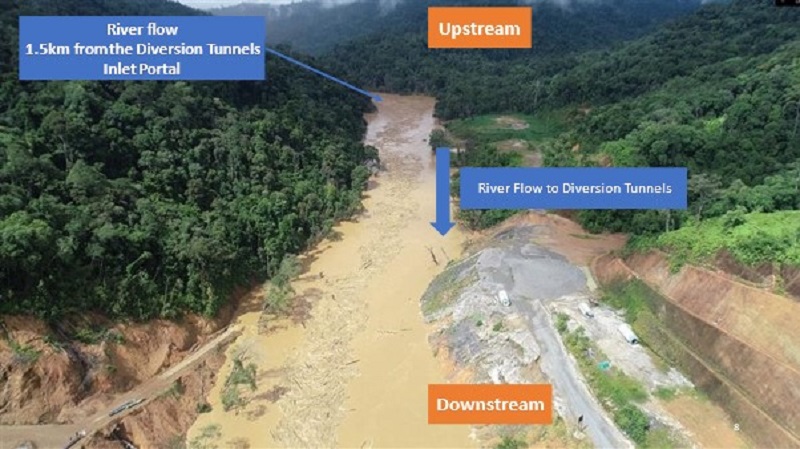KUCHING, Aug 24 — Sarawak Energy strongly refutes claims that the logjam and debris situation seen at Baleh River is caused by site clearing works from the Baleh Hydroelectric Project (HEP).
Scheduled for completion in 2026, the 1285MW Baleh HEP is a key state infrastructure project, so it is in the interest of Sarawak Energy to ensure that such incidents do not occur at the Baleh project site as it is detrimental to the safety of the people, the neighbouring communities and the hydropower facilities and will affect the timely completion of the project.

“There is no major land clearing activity currently happening at the project site that would have contributed to the situation,” it said in a statement yesterday.
SEB said that the last site clearing works were in 2018 during project commencement and that was downstream from the diversion tunnels. The activity was completed in April 2019 where the associated logs and debris were properly disposed of in accordance with the approved Natural Resources and Environment Board (NREB) guidelines and under their supervision.
“The origin of the logjam and debris is upstream of the project site and is clearly not from the site clearing works. This is because biomass clearing activities upstream of the dam to prepare for impoundment is only expected to start in 2023 which is in two years’ time.
“These biomass clearing activities will be under a structured waste management programme under the supervision of the NREB in compliance with the requirements of the Baleh HEP Social Environment Impact Assessment (SEIA) report approved in 2015,” it said.
To verify the source of the floating debris, Sarawak Energy’s team onsite has conducted land, river and aerial drone surveillance following reports of the mass accumulation of timber and other natural debris in the river.
“From the initial assessment, it has been concluded that the source of the debris is more than 1.5km upstream of the diversion tunnels inlet portal. It is understood that timber logging continues to be active at upstream tributaries of Baleh River.
“Sarawak Energy is deeply concerned about the impact of the logjams on the safety of the construction of Baleh HEP. If the situation continues, there will be a significant risk to the project’s construction as well as the safety of downstream communities,” it added.
Sarawak Energy’s team has already started trial clearing works to determine the safest and most efficient method to clear the floating timber debris obstructing the water flow into the inlet portal of the diversion tunnels. For safety reasons, the pace of the clearing works can only be accelerated after the high water levels recede.
Sarawak Energy reiterates its commitment to the responsible delivery and environmental performance of all projects to comply with Sarawak and Malaysia laws as well as international standards and guidelines.
“Baleh HEP is developed in line with international best practices for large dams to ensure integrity and safety. These guidelines include International Commission on Large Dams (Icold) standards and guidelines which ensures our hydropower projects are built and operated safely; and International Hydropower Association (IHA) Hydropower Sustainability Assessment Protocol (HSAP) which is formally embedded in our project development process.”
As a member of the IHA, Sarawak Energy is building the Baleh HEP in accordance with the HSAP in which environment control is a key component and requisite.
This is reflected in the preparatory works, detailed geological investigations and studies conducted at various stages of hydro project development, it said.
Independent reviews are also conducted throughout construction, before impoundment and periodically during operations following commissioning. This has been the practice since the development of Batang Ai Dam, Sarawak Energy’s first large hydropower project, which was constructed in the 1980s and commissioned in 1985.
Sarawak Energy calls on all agencies, other stakeholders and operators in the area to work together to resolve this issue which presents a threat to the safety of the Baleh River community and the safe and timely delivery of the Baleh HEP. — Borneo Post Online



















